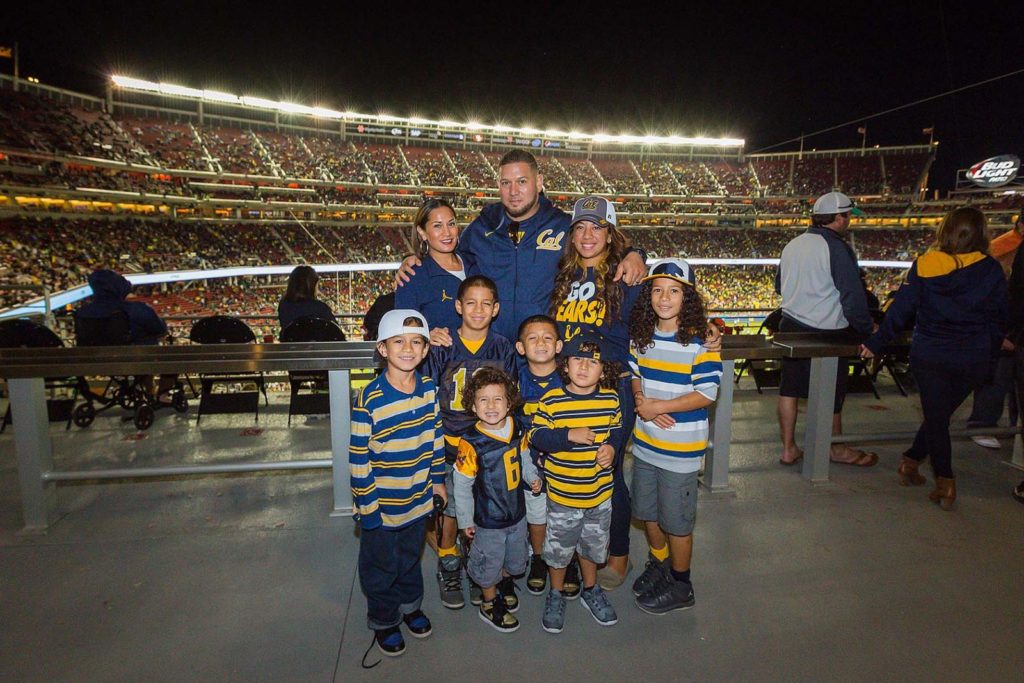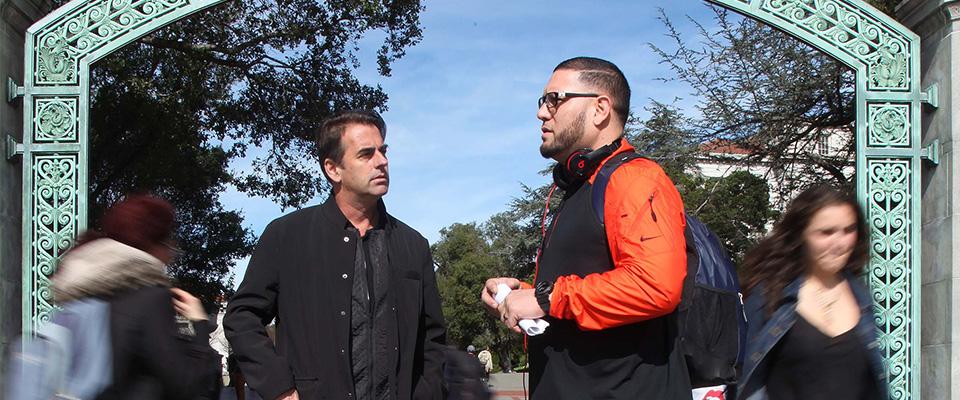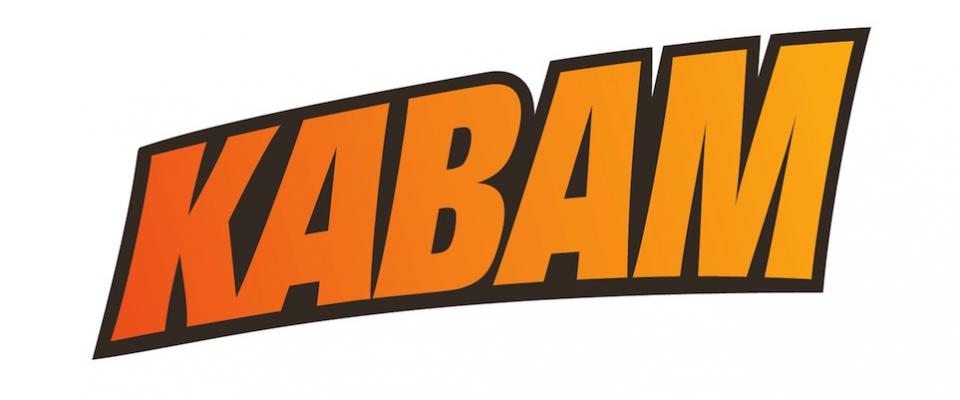When Keala Keanaaina came to Cal on a football scholarship in 1998, a career in the NFL was not on his radar.
“I wasn’t one of those football guys that dreamed of going to the pros,” says Keanaaina. “I chose Berkeley because of its academic reputation. My goal was to graduate and get my degree.”
It would have been a family first. As a teenager growing up in San Mateo, football had kept him out of trouble while his brothers had repeated run-ins with the law. When his high school coach told him that football could land him a scholarship at a premier academic institution, Keanaaina thought, “Me? Really, me?”
Once at Cal, though, Keanaaina’s academic goals were overwhelmed by the demands of NCAA Division I football.
“It’s all-consuming,” he says. “Your time, including your free time, is devoted to your craft. And your craft is football. And ultimately that’s what’s paying for your education.”
The 39-year-old admits he often did just the minimum in his classes, enough to ensure he could suit up on Saturdays. After three years, Keanaaina’s football eligibility ran out (he had played one year in junior college before coming to Cal after a two-year Mormon mission), and he found himself at a crossroads. He hadn’t intended it, but football had become his plan A—and he realized he didn’t really have a plan B. Unable to play further at Cal, he suddenly found a career in professional football to be an appealing option.
“The path of least resistance was football,” he says. “I decided to ride this thing as far as it would take me.”
So, 60 credits shy of a diploma, Keanaaina dropped out of Cal.

UC Berkeley has come under heavy fire in recent years due to a surplus of stories like Keanaaina’s. Graduation rates among some student-athletes, particularly in the revenue-generating sports of football and men’s basketball, have been well below national averages—an embarrassment for an institution widely considered the best public university in the world. Berkeley administrators insist they are taking positive steps to address the problem, even as a growing chorus of critics decry a commercialized athletic program that, they believe, prioritizes wins over academics and sets many student-athletes up for failure.
Amidst all the controversy, one campus program has been quietly helping those who failed to graduate to return and finish what they started. Berkeley’s Degree Completion Program (DCP) was created by Professor Derek Van Rheenen in 2002 to smooth the sometimes bumpy reentry for such students.
“We provide a welcoming space,” explains Van Rheenen, “so that they feel like the opportunity is not over. They can reinvest in their education, and we are here for them.”
Van Rheenen is the director of Berkeley’s Athletic Study Center, which provides academic support to more than 900 student-athletes. He also oversees the Cultural Studies of Sport in Education master’s program in the Graduate School of Education. Van Rheenen says helping former Cal players get their diplomas is a moral issue. “I think once you’ve committed to someone, you’ve got to see them through. You’ve selected them. You’ve recruited them. We need to commit for the long term.”
Van Rheenen is a former student-athlete himself. He played Division I soccer for the Bears in the 1980s while pursuing a bachelor’s degree. He managed to graduate before embarking on a professional soccer career, but he says times have changed; college sports are more competitive and demanding now. Today’s student-athletes face a grueling schedule, he says, akin to working two full-time jobs. Despite a 20-hour-per-week participation limit mandated by the National Collegiate Athletic Association, the governing body’s own 2007 study showed that most athletes devoted closer to 40 hours a week to their sport. Division I football players averaged as much as 45 hours per week. Factor in the academic rigors of a Berkeley education, and the workload can prove to be too much.
“Some of them do amazingly well,” says Van Rheenen. “You see the feats they accomplish, and you think ‘How is that even possible?’ And some give up their athletics altogether because they don’t want to compromise their intellectual pursuits. Others focus more on their athletics and compromise their academic opportunities.”
The academic challenges are magnified for student-athletes admitted with GPAs and SAT scores well below the minimum UC-wide qualification requirements. Although these students, known as “special admits,” receive extra academic support, it’s not always enough.
The Degree Completion Program currently works with more than 30 students. Since it was founded, Van Rheenen says, the program has helped more than 250 former student-athletes, and students in the program have a 93 percent graduation rate. The DCP helps students primarily by plugging them into the resources of the Athletic Study Center. That means advisors and tutors, counseling, career planning, and—often most important of all—funding, some of which comes from the NCAA or from Cal Athletics.
A number of star athletes have availed themselves of the program. These include Olympic swimmer Anthony Ervin, NBA standout Shareef Abdur-Rahim, and NFL running back Jahvid Best.
Not all of the DCP’s beneficiaries have been varsity athletes. Take Patrick O’Toole. As a freshman Reserve Marine at Berkeley in 1991, O’Toole was called up to active duty in Operation Desert Storm. Because he left mid-semester, he ended up with three F’s on his transcript. After six years in the Marines and more than a decade working as a glassblower, O’Toole assumed his academic career was over. Then a friend put him in touch with Van Rheenen.
“Dr. Derek,” as O’Toole now calls him, convinced him that if he was really ready, he could return to Berkeley and get his degree. DCP staff helped him to secure funding, create an academic plan, and get those F’s expunged. He has since replaced them with a string of A’s. O’Toole is now on track to graduate this summer with an Interdisciplinary Studies Field major and a minor in Political Economy.
Certainly a degree from Berkeley can be a springboard for a new career path, but it can also bring participants a sense of fulfillment. For many of them, Van Rheenen says, the failure to complete their degree “just eats away at them.”
Meanwhile, low graduation rates for athletes threaten to eat away at Berkeley’s academic reputation—a problem that both the administration and Cal Athletics are grappling with, and one that is by no means unique to Berkeley.
Under pressure to address poor academic performance among student-athletes nationwide, the NCAA rolled out an academic reform package in 2003. The plan included modified eligibility standards and a series of incentives and penalties to hold college athletic programs accountable for poor academic performance. The NCAA’s 2014 numbers show a nearly 10 percent increase in overall student-athlete graduation rates since 2003, and a record rate of 84 percent for the cohort that started their college education in 2007. (These statistics allow for students to graduate within six years.)

Berkeley has seen a more modest rise in its own student-athlete graduation rates over the same period (its overall rate for the 2007 cohort of student-athletes was 80 percent). But the campus has come under increasing scrutiny for egregious graduation rates among men’s basketball and football players—the top revenue-generating sports at Cal. At 46 percent and 51 percent respectively, Berkeley men’s basketball falls at the bottom of the NCAA Pac-12; and football is dead last among the 63 teams of the Power Five conferences. And those numbers represent a gradual upward trend over the last decade.
Considering that the NCAA’s current nationwide graduation rates are 75 percent for football and 74 percent for men’s basketball (a record high), Berkeley has its work cut out. (Worth noting: Cal’s softball, baseball, and men’s soccer teams all posted rates of 67 percent. And the women’s sports of water polo, tennis, lacrosse, and volleyball all graduated 100 percent of their athletes, as did men’s gymnastics.)
What makes these numbers especially vexing is that Berkeley consistently graduates more than 90 percent of its undergraduates, placing it near the top among public universities.
Critics, including a very vocal segment of the Berkeley faculty, say it’s a case of misplaced priorities. They point out that over the last ten years the athletics budget has nearly doubled, even as declining state funding has brought University-wide budget cuts and soaring tuition. As detractors see it, the struggle to compete in Division I football and men’s basketball has embroiled the University in an athletic “arms race,” with ever-increasing sums dished out for big-name coaches and expensive facilities. This in turn only increases the pressure to win, which ultimately falls on the shoulders of the players. With everyone focused on winning, the “student” in “student-athlete” often gets relegated to an afterthought.
Murray Sperber is a visiting professor in Berkeley’s Cultural Studies of Sport in Education program, and author of the book Beer and Circus, a searing indictment of big-time college sports run amok. He spent the majority of his academic career at Indiana University, a school that lives and breathes basketball. Sperber does not see Cal as cut from quite the same cloth.
“The major issue here at Berkeley,” he says, “is that Berkeley doesn’t cheat like other schools do.” Other schools might create special courses for athletes, for instance, and “Mickey Mouse” majors designed to keep the athletes eligible, he explains. At Berkeley, however, when students are admitted for their athletic abilities, “there’s no place to shelter them,” Sperber says, “no special courses or meaningless majors.”
The NCAA’s 2003 academic reform package, which penalized schools for low graduation rates, aggravated the cheating, Sperber says; recent reports of academic fraud at Division I universities lend credence to his claim. One such report, released in October, revealed that administrators at University of North Carolina had funneled at least 3,100 athletes into sham courses over a span of 18 years. UNC basketball star Rashad McCants, who went on to play in the NBA, claims he made the dean’s list without ever attending classes.
Berkeley has avoided systematic cheating, Sperber says, for two reasons: “First, the faculty really control the curriculum; and second, the faculty is actively skeptical about athletics.” He believes Berkeley’s graduation rates, as a result, more honestly reflect the larger systemic problem.
Still, Berkeley doesn’t have to look far for examples of more functional athletic programs. Stanford posted an overall student-athlete graduation rate of 98 percent for the 2007 cohort, and it beat Cal’s numbers for men’s basketball and football by 39 and 48 percentage points, respectively. Arguably, Stanford is not a fair comparison because it is private and has resources Berkeley can only dream of. But what about UCLA? Berkeley’s southern sister has posted two straight years of football graduation rates over 80 percent.
“It’s a cultural difference at UCLA,” says retired Berkeley Vice Chancellor John Cummins. “There is much more buy-in, more unanimity, in terms of the role and purpose of intercollegiate athletics at UCLA than at Cal.”
Cummins, who serves on the Athletic Study Center’s advisory committee, blames Berkeley’s low graduation rates on a decades-long laissez-faire approach to the management of intercollegiate athletics, and on the failure of multiple Cal administrations to clearly define the role of athletics on campus.
In 2013, Cummins and Berkeley graduate student Kirsten Hextrum published a white paper detailing Berkeley’s history of athletic mismanagement and spiral into commercialization. The paper’s release, along with a fresh batch of awful graduation statistics, brought Cal’s simmering graduation-rate controversy to a boil. The report asserted that the commercialization of football and men’s basketball had fostered an inversion of priorities: Athletic success took precedence over academics.
Cummins and Hextrum offered concrete recommendations for reform, including a strict enforcement of the NCAA’s 20-hour-per-week rule, raising the minimum qualifying requirements for “special admits,” and limiting coaches salaries. (The five highest-paid employees of the State of California are all UC coaches.)

The administration and the athletics department were thrust into damage control mode. Within months, Chancellor Nicholas Dirks initiated the Task Force on Academics and Athletics to tackle the issues. Then in September 2014, Chancellor Dirks announced numerous changes to be made based on the task force’s findings, including the creation of a new recruitment coordinator position charged with overhauling the recruitment and admissions program, and an increased emphasis on academics in the annual performance evaluations of coaches and the athletics director. The latter will now report directly to the chancellor.
A scant month later, Berkeley’s Academic Senate announced heightened minimum admissions requirements for student-athletes, and on January 18, UC President Janet Napolitano approved a new policy stipulating that coaches and athletics directors can lose their lucrative bonuses if students founder in the classroom. With several major personnel changes, including the replacement of longtime Athletics Director Sandy Barbour, and many of the task force’s recommendations set to phase in this year, it seems that Cal Athletics may have arrived at a pivotal moment.
“I don’t think it’s ever been done before,” says Cummins of the concerted effort at reform. “Hopefully it will lead to significant changes, including a more full integration of student-athletes as students first.”
This notion of integrating student-athletes into the greater campus community is a central part of the administration’s new strategy, and some say it’s the key to fostering academic success.
Keala Keanaaina remembers well the feeling of being segregated from the larger student body. “You’re separate. [Football] becomes your world,” he says. “You don’t have the opportunity to reach out and experience other things and build those other relationships.”
After dropping out of Berkeley, Keanaaina set his sights on a pro football career. Following a successful season in the Arena Football League with the San Jose SaberCats, he got the call he had been waiting for from the Cleveland Browns. They signed him, only to release him a month later. The next season he was back in the Arena Football League, but a succession of injuries soon brought his fledgling professional career to an end. He returned to raise a family in San Mateo, where he worked as a police officer for six years. It wasn’t until an injury once again forced him into retirement that he heard about Berkeley’s Degree Completion Program.
With Van Rheenen’s help, he is now a participant in the program, hammering away at those missing credits. “I went to Berkeley in the first place to get a degree,” Keanaaina says. “I made that promise to myself and to my family that I would finish what I started.”
Van Rheenen believes that the University should make a similar promise to its student-athletes. The potentially exploitative relationship between universities and student-athletes has been a major focus of his research. When a student-athlete signs a letter of intent with a university, Van Rheenen says, “the student makes this major commitment to the institution, and the institution often makes—some would argue—a kind of half-assed commitment back.” He created the DCP as a way to make good on Berkeley’s end of the bargain.
“For me, the important thing is that we have this commitment to these students for their lives, not just while they’re eligible.” And not just for student-athletes. “Berkeley should be doing this for every student.”
In fact, Van Rheenen says he is happy to provide assistance to nonathletes who contact the program. Until Cal can raise the graduation rates of its student-athletes, however, he will likely have his hands full following through on commitments better taken care of the first time around.
Berkeley native Coby McDonald is a former California intern, now freelance writer.





















